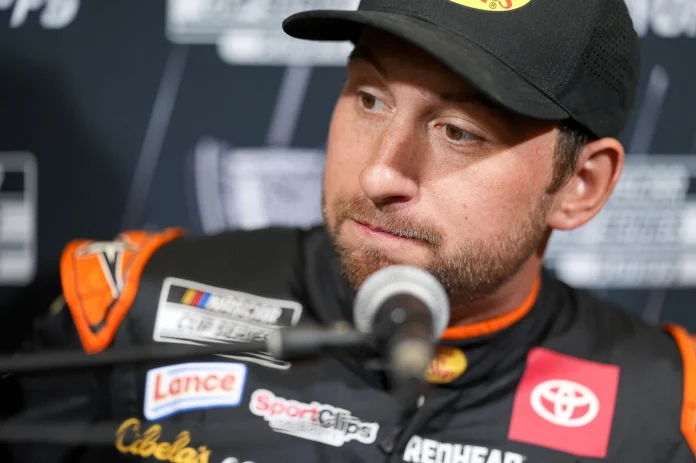Chase Briscoe has revealed that the Chase Briscoe NASCAR fuel saving strategy has become a crucial aspect of his approach in the recent Cup Series seasons, sharing how this habit has made a difference on race day. As NASCAR has embraced a new era where fuel management plays a more significant role, drivers and teams have developed creative and tactical methods to gain a competitive edge.
Fuel Conservation Becomes a Deciding Factor in Cup Series Racing
In the current Next Gen era, fuel efficiency is a growing focus for teams and drivers, partly because there is no conventional fuel gauge in modern Cup cars. Teams rely on sophisticated calculations, monitoring throttle use and braking patterns to manage fuel throughout a race, which can see cars burn up to 70 gallons. Chase Briscoe explained that fuel conservation is now second nature:
“It’s become a habit. Even weeks where we don’t need to be, I’m saving fuel just for the sake of it because you never know what can happen and it eventually adds up. That’s just been something I’ve really kind of burned into my mind over the course of the last couple of years in Cup racing, and it’s obviously worked out for us.” —Chase Briscoe, NASCAR Driver
Teams also face challenges with the newer single-nut pitstops, which have sped up pit times but made fuel planning more complex. This forces crews to make tough decisions between holding track position or ensuring the car is fully fueled. Drivers like Briscoe adapt by coasting during long straights and toggling their engines under caution periods, emphasizing the high value of every gallon.
Notable Fuel Strategy Moments in the Season
Fuel-saving tactics have already shaped major moments this season. Denny Hamlin, Briscoe’s Joe Gibbs Racing (JGR) teammate, executed a masterful fuel-saving run at Michigan International Speedway, ultimately outlasting William Byron in the race’s closing stages as Byron’s car ran short on fuel. These scenarios underline how championship hopes can hinge on tactical decisions long before the checkered flag waves.
Transitioning from Stewart-Haas Racing to Joe Gibbs Racing
Chase Briscoe’s move from Stewart-Haas Racing (SHR) to JGR marked a significant turning point after SHR ended operations. The Indiana native started his current season strongly, clinching the pole at Daytona and repeating his qualifying success five more times. Comparing his prior and current teams, Briscoe described his unexpected discoveries about the differences between their cars when speaking with Dale Earnhardt Jr.
“I thought when I came here they were gonna drive exactly the same. And even Bell, I remember him saying, “Oh yeah, it’s gonna drive just like what you’re used to.” You’re just gonna go faster. I’m like, what you have no idea what I was driving before… It has more grip, it turns better, and it goes faster. It’s unbelievable. Just doesn’t feel bound up. It just has a way better,” he said. —Chase Briscoe, NASCAR Driver
Last season, Briscoe’s first victory did not arrive until the regular season’s final race at Darlington, while this year, he secured a playoff spot with nine events still on the calendar. His progress has kept him eighth in the current playoff standings, sitting four points above the cutline. Briscoe’s lone victory so far came at Pocono Raceway, where he led 72 laps, demonstrating both his driving ability and strategic approach.
The Influence of Fuel-Saving Strategy on Future NASCAR Seasons
Chase Briscoe’s experience, combined with high-profile examples like Denny Hamlin’s victory, signals that fuel management will remain a cornerstone of competitive success in NASCAR’s evolving landscape. With more teams fine-tuning their approaches, expect this theme to shape not just individual races but how drivers and crews prepare for the challenges of a season.


